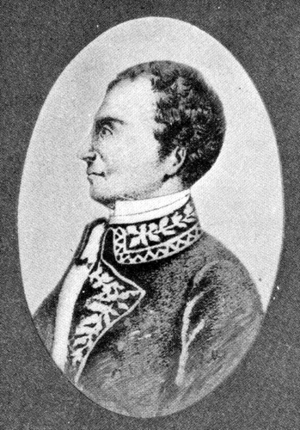André Rigaud facts for kids
Quick facts for kids
André Rigaud
|
|
|---|---|
 |
|
| Born | 17 January 1761 |
| Died | 18 September 1811 (aged 50) |
| Known for | Revolutionary military leader and General; proclaimed Presidency of the southern state of Haiti in opposition to his protégé, Alexandre Pétion |
Benoit Joseph André Rigaud (born January 17, 1761 – died September 18, 1811) was an important military leader during the Haitian Revolution. He was a "mulatto" leader, meaning he was of mixed European and African heritage. Two of his students, Alexandre Pétion and Jean-Pierre Boyer, later became presidents of Haiti.
Contents
Early Life of André Rigaud
André Rigaud was born on January 17, 1761, in a place called Les Cayes, in what was then Saint-Domingue. His father was a rich French planter named André Rigaud, and his mother was a slave woman named Rose Bossy Depa.
His father recognized him as his son when he was young. He sent André to Bordeaux, a city in France. There, André learned the skill of being a goldsmith, someone who makes things out of gold.
André Rigaud's Role in the Revolution
After finishing his training in France, Rigaud came back to Saint-Domingue. He quickly became involved in politics. He followed in the footsteps of other leaders like Vincent Ogé and Julien Raimond. These leaders fought for the rights of "free people of color" in the colony.
Saint-Domingue was a French colony, and it is now known as Haiti. Rigaud supported the French Revolution and its ideas. He believed that the Declaration of the Rights of Man and of the Citizen meant all free people should have equal rights.
Leading an Army in Saint-Domingue
By the mid-1790s, there were slave uprisings in the northern part of the colony. Rigaud became the leader of an army in the southern and western areas. French officials gave him the power to govern these regions.
Rigaud's power came from his strong influence with the free black and mulatto planters in the South. These planters were worried about the large groups of former slaves. Rigaud chose to side with the French officials, who ended slavery in Saint-Domingue in 1793. His army included both black and white soldiers.
Rivalry with Toussaint Louverture
From 1793 to 1798, Rigaud helped bring back the plantation economy in the South and West. This meant people worked on plantations for pay, not as slaves. Rigaud respected Toussaint Louverture, who was the main general of the former black slaves in the North. Toussaint was also higher in rank in the French army.
However, Rigaud did not want to give up his power in the South to Toussaint. Rigaud still believed in a system where people were ranked by their race. He thought mulattoes were just below whites, and blacks were at the bottom. This belief caused disagreements with Toussaint.
This led to a difficult conflict known as the "War of Knives" (La Guerre des Couteaux). It started in June 1799 when Toussaint's army attacked Rigaud's territory. A French official, the Comte d'Hédouville, even encouraged this rivalry between Rigaud and Toussaint.
In 1800, after Toussaint defeated him, Rigaud left Saint-Domingue for France. On his way, his ship was captured by an American warship, the USS Experiment. He was held as a prisoner in Saint Kitts until he was released.
Return with Leclerc's Expedition
Rigaud came back to Saint-Domingue in 1802 with General Charles Leclerc. Leclerc was Napoleon Bonaparte's brother-in-law. Napoleon sent Leclerc to remove Toussaint from power and bring back French rule and slavery.
France had ended slavery in the colony in 1794 after the first slave uprising. This had hurt the colony's economy, which relied on sugar and coffee. Many white and mulatto planters had left the island.
Leclerc first succeeded in capturing Toussaint and sending him away. But Toussaint's officers continued to fight against the French for two more years. The French army was weakened by disease and Haitian resistance. In November 1803, France pulled out its remaining troops. Jean-Jacques Dessalines, a black leader from the North, led Saint-Domingue to victory. He declared the nation independent and named it Haiti. He later became emperor.
After the French expedition failed, Rigaud returned to France. For a time, he was held in Fort de Joux, the same prison where his rival, Toussaint, died in 1803.
Final Return to Haiti
Rigaud returned to Haiti for a third time in December 1810. He declared himself the "President of the State of the South". He was in opposition to both Alexandre Pétion, a mulatto and former ally, and Henri Christophe, a black leader in the North.
Rigaud died the following year. Soon after his death, Pétion regained control over the South. Rigaud's tomb is on a small hill between Camp-Perrin and Les Cayes.
See also
 In Spanish: André Rigaud para niños
In Spanish: André Rigaud para niños

